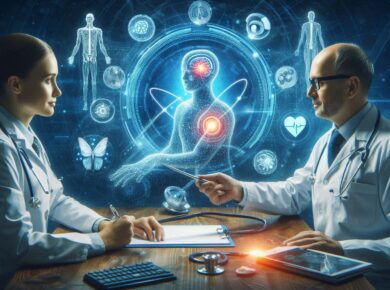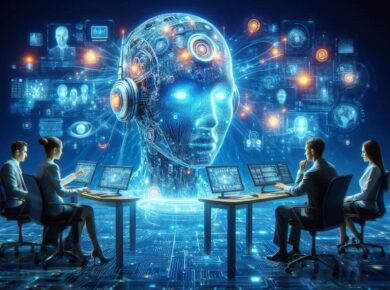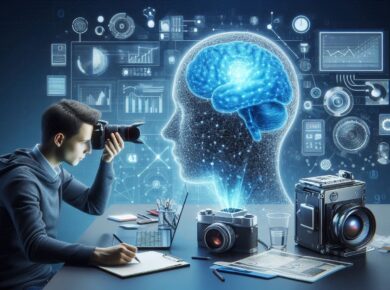Table of Contents
As artificial intelligence (AI) continues to evolve, its applications in the realm of creativity are becoming increasingly prominent. From music composition and visual arts to literature and film, AI is not only augmenting the creative process but also challenging traditional notions of creativity itself. This article delves into the relationship between AI and creativity, exploring whether AI can indeed break the boundaries of imagination.
Understanding AI’s Role in Creative Processes
AI technology leverages algorithms and machine learning to analyze vast datasets, generating new ideas and works of art. By understanding existing styles, themes, and techniques, AI can assist artists and creators in ways that were previously unimaginable.
Key Technologies Driving AI Creativity
- Generative Adversarial Networks (GANs):
GANs are a class of AI that can create new content by learning from existing datasets. They work by having two neural networks—one generating images and the other evaluating them—thus allowing for the creation of strikingly original artwork. - Natural Language Processing (NLP):
NLP enables AI to understand and generate human-like text. This technology has been employed in writing novels, poetry, and even screenplays, producing creative narratives that challenge human authorship. - Music Generation Algorithms:
AI music composition tools analyze musical patterns and genres to create original compositions. These algorithms can produce everything from symphonies to pop songs, often mimicking the styles of well-known artists.
The Impact of AI on Various Creative Fields
AI’s influence can be seen across numerous creative domains, where it not only enhances but also transforms traditional practices:
1. Visual Arts
AI artists like DeepArt and Artbreeder allow users to create stunning visuals by combining different artistic styles or generating entirely new images. These tools challenge conventional methods of art creation, leading to a redefinition of what constitutes art.
2. Literature
AI writing assistants, such as GPT-3, can generate coherent and contextually relevant text, enabling authors to brainstorm ideas, overcome writer’s block, and even co-author pieces. This collaboration raises questions about authorship and originality in literature.
3. Music
AI composers like AIVA (Artificial Intelligence Virtual Artist) create music scores that can evoke a range of emotions. By analyzing existing music, these AI systems can craft original pieces that resonate with audiences while providing a unique sound.
4. Film and Animation
AI is also making strides in the film industry, from scriptwriting to visual effects. Algorithms can analyze scripts and suggest plot improvements, while AI-generated characters and scenes enhance the production process.
The Debate: Can AI Truly Be Creative?
While AI’s capabilities in creative tasks are impressive, the debate continues over whether AI can genuinely be considered creative. Key points in this discussion include:
1. Definition of Creativity
Creativity traditionally involves human experiences, emotions, and the ability to think outside the box. Some argue that AI lacks the consciousness and emotional depth necessary for true creativity, as it relies on patterns rather than personal experiences.
2. Collaboration vs. Originality
AI can assist and augment human creativity but raises questions about originality. When an AI-generated piece is created based on existing works, is it truly original? Or is it simply a remix of what already exists?
3. The Human Touch
Many believe that the most compelling art emerges from the human experience—the struggles, joys, and nuances that AI cannot replicate. The emotional connection between creator and audience remains a crucial element of artistic expression.
The Future of AI and Creativity
The future of AI in creative fields is both exciting and uncertain. As AI continues to evolve, its role in the creative process will likely expand, leading to new forms of expression and collaboration. Here are some trends to watch:
1. Enhanced Collaboration
Rather than replacing human artists, AI is more likely to serve as a collaborative partner, enhancing the creative process and enabling new forms of artistic expression.
2. Personalized Creativity
AI tools will become more adept at understanding individual creators’ styles, allowing for highly personalized assistance that can adapt to the creator’s preferences and vision.
3. Ethical Considerations
As AI-generated content becomes more mainstream, discussions around intellectual property rights, authorship, and the ethics of using AI in creative processes will intensify.
Conclusion
AI’s integration into the creative landscape is redefining the boundaries of imagination. While it may not fully replicate the depth of human creativity, it undeniably offers exciting opportunities for collaboration, innovation, and exploration. As artists and creators embrace these technologies, they will continue to push the limits of what is possible, leading to a future where human and machine creativity coexist and thrive. In this evolving relationship, the question remains: can AI break the boundaries of imagination, or will it merely reshape them? The answer lies in how we choose to harness this powerful tool in our creative endeavors.






